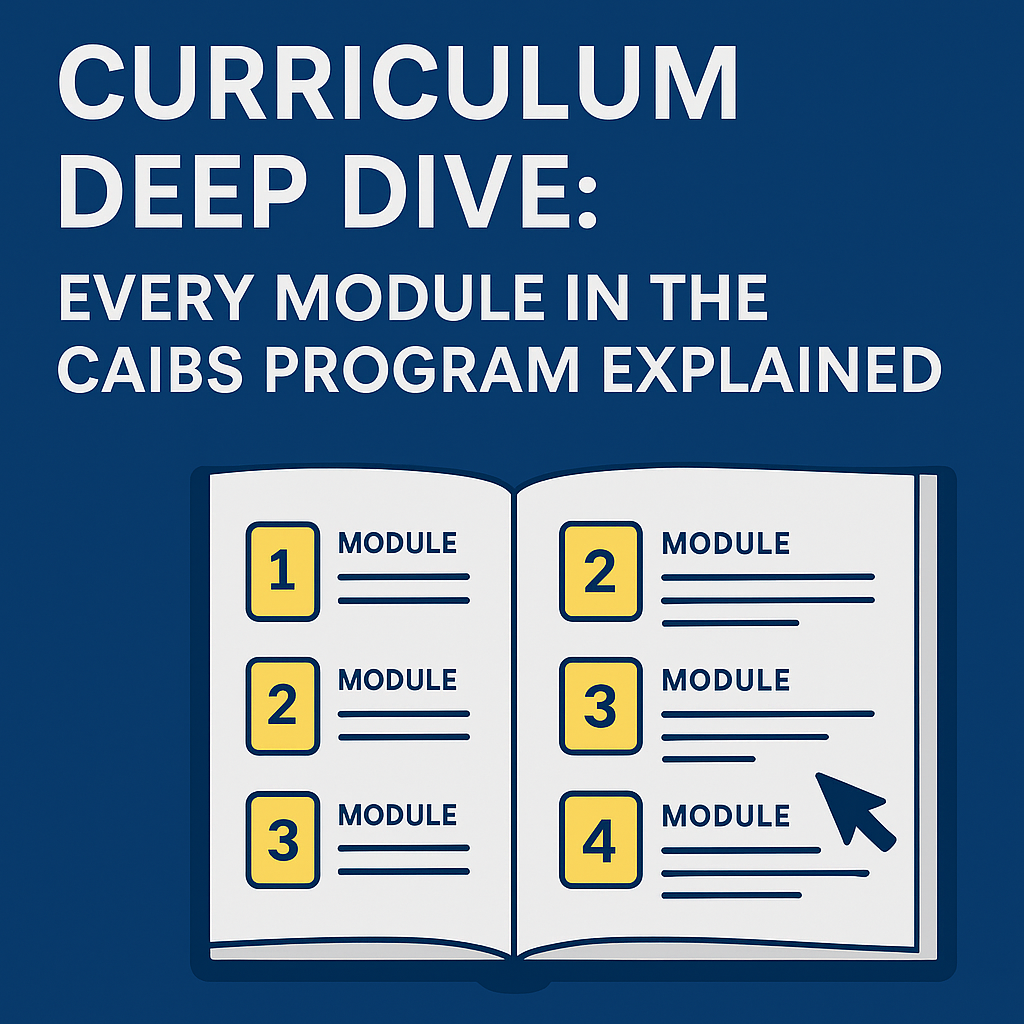
Explore every module in the Certified AI Business Strategist (CAIBS) program. This deep dive explains the course structure, learning outcomes, and how each part builds strategic AI leadership.
The Certified AI Business Strategist (CAIBS) program is making waves as the go-to credential for professionals leading AI transformation. But what exactly do you learn inside the course?
This post breaks down every module of the CAIBS program, showing how each one builds your ability to think, plan, and act strategically in AI-powered business environments without coding.
Is CAIBS Right for You? Eligibility & Readiness for the Certified AI Business Strategist Program
Let’s unpack the full CAIBS curriculum so you can see how it’s structured and what you’ll walk away with.
Overview: How the CAIBS Program Is Structured
The caibs program includes 8 core modules, each designed to build a specific layer of strategic AI capability. The course is:
- 100% online and self-paced
- Includes quizzes, tools, case studies, and strategy templates
- Ends with a capstone strategy project and final certification
It’s more than learning, it’s a leadership accelerator.
How Modules Are Linked
The caibs program is designed in stackable layers:
| Level | Skill |
|---|---|
| Foundation | AI understanding + business alignment |
| Analysis | Readiness + risk governance |
| Leadership | Change + ROI delivery |
| Application | Capstone project |
Each module builds on the last, giving you a 360° view of AI strategy from inspiration to execution.
What You Get at Completion
Once you complete the full CAIBS program:
- You’ll receive a verifiable certificate
- Access to the alumni group
- Lifetime access to the course with any new updates
Ready to Explore the Full CAIBS Program?
Visit The Case HQ for 95+ courses
Read More:
Exploring the Role of Case Studies in Market Research
How Case Studies Foster Critical Thinking Skills
What Is CAIBS? Discover the Certified AI Business Strategist Program Driving the Future of Work
Certified AI Business Strategist (CAIBS): A Complete Guide to AI Strategy Certification
Inside the CAIBS Course: What You’ll Learn in the Certified AI Business Strategist Program
Why CAIBS Is the #1 Choice for AI Business Professionals in 2025
Certified AI Business Strategist (CAIBS): Career ROI That Pays Off Fast
Is CAIBS Right for You? Eligibility & Readiness for the Certified AI Business Strategist Program
https://thecasehq.com/curriculum-deep-dive-every-module-in-the-caibs-program-explained/?fsp_sid=3563
Comments
Post a Comment